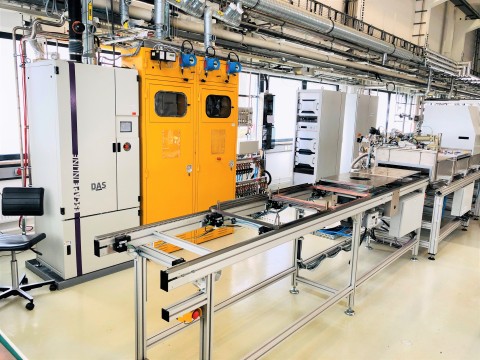[Press release, Forge Nano, LINK] LOUISVILLE, CO., October 2019 — Delivery and installation of Forge Nano’s industry leading, lab-scale ALD tool- Prometheus has been completed.
Forge Nano’s Prometheus tool is a lab-scale R&D tool designed to make ALD research approachable and affordable. The Prometheus series of ALD tools have been designed to be the world’s most robust, flexible, and economical ALD tools available. Designed with the lab environment in mind, applying nanoscale encapsulating coatings on milligrams to kilograms of powders has never been more attainable. It can also be used to coat small objects.
The Prometheus system accommodates up to 8 precursors, including basic delivery and low vapor pressure delivery draw systems to handle gas, liquid, and solid precursor recipes with ease. (www.foregnano.com)
The U.S. Department of Energy’s Argonne National Laboratory recently commissioned Forge Nano to build and install their revolutionary ALD tool- Prometheus. The Prometheus tool will extend Argonne’s expertise and capabilities to perform a broader range of cutting-edge ALD research on site in a safe, consistent, and reliable manner.
Prometheus features:
Forge Nano’s is uniquely positioned in the market to enable scale-up from lab to manufacturing so that developed IP has a pathway to commercialization. Our line of tools covers the entire product cycle, from R&D, to pilot scale, to complete manufacturing implementation. Forge Nano’s team of ALD experts guide our customers through the entire process, making ALD feasible for nearly any industry.
“We are excited to see Prometheus installed at Argonne National Laboratory adding to their world-class ALD capabilities. We cannot wait to see the new and exciting innovations that the team at Argonne will develop, using our technology and tools.” –Dr. Paul Lichty
The U.S. Department of Energy’s Argonne National Laboratory recently commissioned Forge Nano to build and install their revolutionary ALD tool- Prometheus. The Prometheus tool will extend Argonne’s expertise and capabilities to perform a broader range of cutting-edge ALD research on site in a safe, consistent, and reliable manner.
Prometheus features:
- Largest capacity and throughput. The Prometheus tool is the only commercially available fluidized bed atomic layer deposition (ALD) tool that can process up to 1 kg batches of cathode.
- Swappable reactor sizes to precisely coat milligrams to kilograms of material
- Proprietary fluidization aids (jet assist) that enable fluidization and ALD deposition on powders that cannot be successfully and conformally coated on other systems.
- Inert isolation and handling capabilities of substrates.
- Proprietary precision-dosing design that allows for higher precision and repeatability of precursor dosing than other equipment on the market
- Non-discriminant precursor capabilities that allows for precursor types and sizes that other equipment cannot accommodate.
Forge Nano’s is uniquely positioned in the market to enable scale-up from lab to manufacturing so that developed IP has a pathway to commercialization. Our line of tools covers the entire product cycle, from R&D, to pilot scale, to complete manufacturing implementation. Forge Nano’s team of ALD experts guide our customers through the entire process, making ALD feasible for nearly any industry.
“We are excited to see Prometheus installed at Argonne National Laboratory adding to their world-class ALD capabilities. We cannot wait to see the new and exciting innovations that the team at Argonne will develop, using our technology and tools.” –Dr. Paul Lichty
























